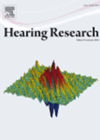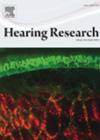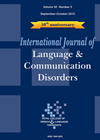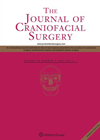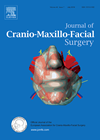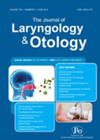
Journal Reviews archive for January 2016
Cochlear implants for tinnitus
This study from Belgium is the first to look at the long term reduction in tinnitus for a cohort of 23 patients with unilateral profound hearing loss and incapacitating tinnitus implanted with cochlear implants (CI). The authors were able to...
Childhood speech processing in background noise
Normal childhood development of the auditory systems involves mapping sounds to meaning and the neural coding of speech. Children are often subjected to adverse listening environments such as high levels of background noise. This paper aimed to delineate the effects...
Efficacy of interventions for stuttering: literature review
This is the first part of a two-article review of the efficacy of different modalities of treatments used for treatment of stuttering / stammering. In this article, the authors describe their efforts to identify and quantify evidence on various interventions...
Impact of lingual pumping in Parkinson’s patients with dysphagia
Dysphagia in Parkinson’s disease (PD) is one of the most important causes of mortality in these patients. Swallowing difficulty in Parkinson’s disease is associated with lingual pumping or festination, anterior escape, premature loss of bolus, oral and pharyngeal retention, multiple...
Shoulder function in patients undergoing neck dissection: its effects on work and leisure activities
Shoulder dysfunction is common after neck dissection and includes shoulder pain, limited abduction and scapular winging. Modifications of the radical neck dissection were designed to limit morbidity, however, even with accessory nerve-sparing neck dissections, shoulder dysfunction can be seen. Shoulder...
Predictors of complications in patients undergoing oral cavity cancer surgery
Surgical management of oral cavity cancers is complex, frequently involving extensive resections and complicated reconstructions. Quantification of risk in an individual patient may allow surgeons to more effectively identify patients at higher risk of complications and develop strategies for prevention,...
Identifying early flap failure
The holy grail of flap monitoring is an easy, reliable and predictive method to identify impending compromise. Does this paper provide it? Various methods have been used to improve our ability to monitor the viability of a flap and here...
The mark of the head and neck surgeon
Like Zorro, the head and neck surgeon leaves their mark. No more so than during parotid surgery. Various modifications have been put forward modifying the classic Blair incision. This latest modification camouflages the pre-tragal scar by running it on to...
An overview of microsurgical reconstruction of the head and neck worldwide
Microsurgical reconstruction is an integral part of the treatment following ablation for malignancy or trauma. Currently there are no clear treatment guidelines following tumour resection. This was recognised a few years ago and in 2008 various collaborative groups were founded...
Facial reconstruction with polyethylene implants
Planning reconstructive surgery for complex craniofacial defects challenges even the most experienced of surgeons. In most cases surgery is undertaken to improve anatomical functioning. However the anatomical structure of these regions is also critical to facial aesthetics and patient satisfaction...
Postop follow up of oral squamous cell carcinoma: a new protocol
Oral and oropharyngeal cancers together are the sixth most common malignancy in the world, with an increasing incidence of oral squamous cell carcinoma (OSCC). The recurrence rate of OSCC is reported to be approximately 10-26%. About two-thirds of all recurrent...
Are upper respiratory symptoms and macroscopic changes in children always due to gastro-oesphageal reflux?
In children, symptoms such as chronic cough, wheezing, stridor, voice changes, persistent asthma and dental erosion are often presumed to be due to gastro-oesophageal reflux and empirical treatment with PPIs is offered. Usual investigations, such as a barium meal, gastroscopy...

